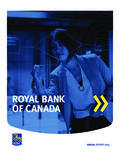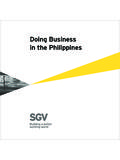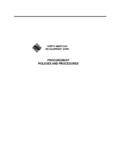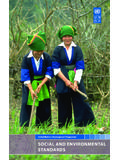Transcription of Mining Community Development Agreements - …
1 Mining Community Development Agreements Source Book March 2012. THE WORLD bank . i 5/24/12 9:33 AM. ii 5/24/12 9:33 AM. Contents ACKNOWLEDGMENT ..vii FOREWORD ..ix 1. INTRODUCTION ..1. Objectives of This Document .. 3. TARGET AUDIENCE .. 3. 2. WHAT IS A CDA? ..5. CDA 6. When and Why Should CDAs Be Developed? .. 9. What Is a Successful CDA? .. 10. Participatory Approach .. 14. CDA Process .. 14. Timeframe and Process .. 15. 3. PHASE 1: STAKEHOLDER IDENTIFICATION, ANALYSIS AND ENGAGEMENT ..18. Qualified Communities .. 18. Stakeholder Mapping and Analysis.
2 22. The Roles and Responsibilities of Stakeholders .. 24. GOVERNMENT .. 26. Mining COMPANIES .. 27. THIRD PARTIES .. 27. VARYING RESPONSIBILITIES .. 28. Engagement Planning .. 29. Phase 1 30. 4. PHASE 2: CAPACITY Development FOR A CDA ..31. Capacity Assessment .. 32. TYPES OF CAPACITY .. 32. PARTICIPATORY NEEDS ASSESSMENT .. 34. Capacity Development .. 36. Partner Organizations .. 40. Phase 2 41. 5. PHASE 3: STAKEHOLDER Community Representation .. 42. RISKS OF INEQUALITY AND INEQUITY .. 43. THE CRITICAL ROLE OF PARTNERSHIPS AND MULTI-STAKEHOLDER FORUMS.
3 43. Representation of Government, Industry, and Third 44. Phase 3 45. iii iii 5/24/12 2:05 PM. 6. PHASE 4: IMPLEMENTATION ISSUES AND FEEDBACK MECHANISMS. FOR A CDA ..46. Potential to Withdraw Clauses .. 46. Confidentiality .. 48. Grievance, Feedback, and Dispute Resolution Mechanisms .. 48. GENERAL PRINCIPLES .. 48. INTEGRATION WITH 50. Community /Social Investment .. 51. GENERAL PRINCIPLES .. 51. Phase 4 54. 7. MANAGEMENT, BUDGETING, MONITORING, ASSESSMENT, AND SUSTAINABILITY ..55. CDAs and Budgeting .. 56. DESIGN PRINCIPLES.
4 56. SUSTAINABLE BUDGETING .. 57. Monitoring and Evaluation .. 57. Accountability and Transparency .. 58. CDA and Local Economic Development 59. CDAs and Closure Planning .. 60. CDAS, CLOSURE, AND LOCAL Development PLANS .. 60. CDAS, CLOSURE, AND CAPACITY Development .. 60. CDAS AND FUTURE FUNDING .. 61. CDAs and Project 61. REFERENCES ..62. Summary of Figures Figure Core Principles for CDA Development .. 10. Figure Flow Chart: Example CDA Development Process .. 15. Figure CDA Processes over the Mine Life .. 17. Figure Basic Stakeholder Mapping Concept.
5 22. Figure Example Stakeholder Map .. 23. Figure Basic Feedback Mechanism .. 49. Figure Planning for Community /Social Investment .. 52. Summary of Tables Table Benefits of Community Development Agreements .. 8. Table Building Blocks of Community Development Agreements .. 11. Table Summary of Recommended CDA Outputs .. 16. Table Information Sources for the Determination for Qualified Communities .. 21. Table Capacity Requirements and Questions .. 35. Table Examples of Capacity Development Methods .. 37. iv iv 5/24/12 2:05 PM.
6 List of Acronyms BTC Baku-Tblisi-Ceyhan CDA Community Development Agreements CDRF Capacity Development Results Framework CMCAs Community Mine Continuation Agreements CSR Corporate Social Responsibility CSRM Centre for Social Responsibility in Mining ERM Emvironmental Resources Management ESHIAs Environmental, Social, and Health Impact Assessments FTFs Foundations, Trusts, and Funds IBAs Impact Benefit Agreements ICMM International Council on Mining & Metals IFC International Finance Corporation ILUA Indigenous Land Use agreement NADeF Newmont Ahafo Development Foundation NGOs Nongovernmental organizations O&G Oil and Gas PNG Papua New Guinea SAFETE South African Fund for African Energy, Transport, and Extractive Industries UNDP United Nations Development Program WBG World bank Group v v 5/24/12 9:33 AM.
7 Vi 5/24/12 9:33 AM. Acknowledgment This report Mining Community Development agreement Source Book is a product of the World bank Sustainable Energy Oil, Gas, and Mining Unit (SEGOM). The task team comprised of Boubacar Bocoum (Task Team Leader), Kristina Svensson (Operations Offi- cer), Peter van der Veen (consultant), Charles E. Di Leva (Chief Counsel, LEGEN), and Sachiko Morita (Counsel, LEGEN). The World bank task team would like to acknowledge the contributions of James Otto, the Environmental Resources Management (ERM), and the University of Queensland CDA.
8 Who were the primary authors of the documents synthesised by ERM, and complemented where relevant by the later to form the core of this report. The World bank task team would also like to thank Paulo de Sa, Sector Manager (SEGOM), Marianne Fay (Chief Economist SDN) and many colleagues from SEGOM and the World bank Group for their valuable support and contribution to this work. The World bank task team would like to also recognise the contribution of Mining com- panies, governments, and civil society organizations in Argentina, Canada, Ghana, Kyrgyzstan Republic, Liberia, Papua New Guinea, Lao PDR, Nigeria, USA and elsewhere for their participation in the case studies and consultations.
9 The report benefited from written comments received from peer reviewers Harvey Van Veldhuizen (OPCQC), Dafna Tapiero (COCSC), Christopher Gilbert Sheldon (SEGOM), Mohammed Bekhechi (LEGEN), Deval Desai (LEGJR), and from Luc Danielson (Sus- tainable Develepment Strategies Group) in his capacity as an external reviewer. It also benefited from contributions from Marietta Shimizu-Larenas (consultant), Gary McMahon (SEGOM), John Butler (EAPCO), Victoria Bruce-Goga (SEGOM), and Raja Manikandan (SEGOM). The World bank would also like to thank the South African Fund for African Energy, Trans- port, and Extractive Industries (SAFETE) for financing this work.
10 Vii vii 5/24/12 9:33 AM. viii 5/24/12 9:33 AM. Foreword Recently, there has been a growing interest by government policymakers, civil society, communities, and Mining companies on the sustained Development of mine-impacted communities as part of the debate around the costs and benefits of mineral Development . Communities have become more vocal in expressing their expectations for benefits, while Mining companies are concerned about the need and means by which to obtain and main- tain their social license to operate based on local Community support.















